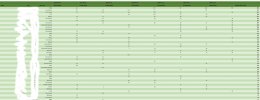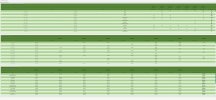- Joined
- Jun 23, 2020
- Messages
- 536
I'm looking at priority pull information. Dataset is
Now, there is a column which appears to have the correct data, but I can't use it.
Is there something I'm missing? Is there even a way to convert a dimension to a metric? Or is this all futile?
By batch:

Total:

StoreLogistics.PULL_COMPLETION_MYDAY. The dataset has a metric column that incorrectly assumes DPCI/hr is 60.0 and calculate the hours pulled as DPCI Pulled x 60 DPCI/hr (i.e. 60 DPCI pulled would display as having taken 1 hour).Now, there is a column which appears to have the correct data, but I can't use it.
completed_time_secs and completed_time_min are both the accurate time taken. When looking at individual pull batches (every time you hit start batch) I can get it to display correctly, but I can't get it to aggregate together properly. So looking at every individual batch, it's right, but if I wanted a total DPCI and total hours, I can't get it to summarize correctly.Is there something I'm missing? Is there even a way to convert a dimension to a metric? Or is this all futile?
By batch:

Total:



